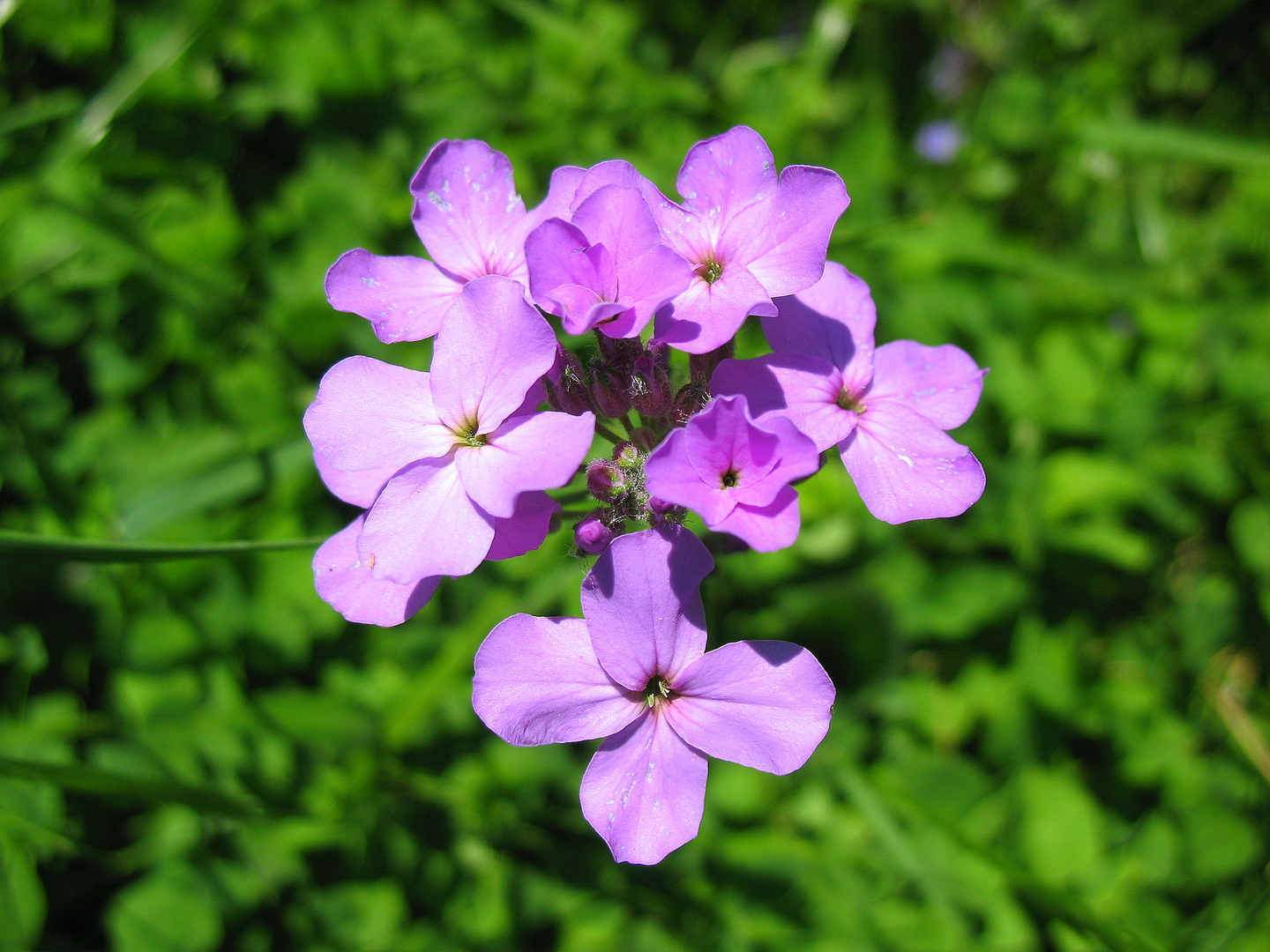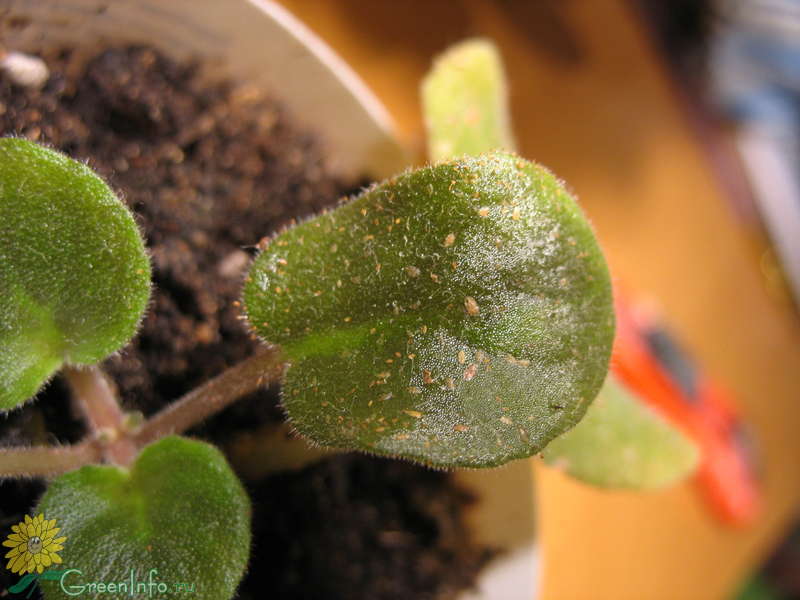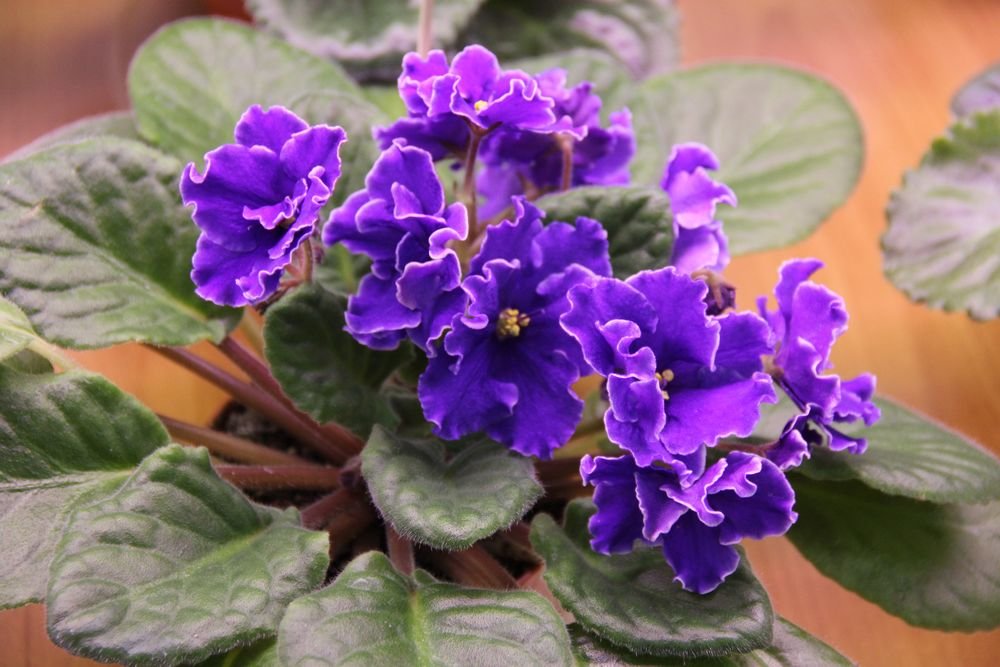Violets are very loved by many flower growers for their pleasant aroma; for bright, varied colors - monochrome and variegated; for the variety of species, because in Russia alone there are about twenty of them, and each species gives its own, unique flowers of various shapes.
There is an opinion that the violet is an unpretentious plant that will delight its owner with bright double flowers exuding a delicate aroma. But why, then, do many gardeners and florists face such a problem that a violet lets out a large number of petals and not a single flower, and how to make a violet bloom? In fact it is pretty picky plant, the flowering of which can be influenced by a large number of factors, often closely related to each other.
Content
Reasons why violets do not bloom at home
Let's take a look at the main reasons and ways to make a violet bloom.
Lighting
Pay attention to the leaves - if they have risen a little and stretch up, then, most likely, for a plant picked up the wrong place in the apartment and it lacks lighting. Violets are very fond of light, it is from the correct lighting that their bright colors and development depend. But, choosing a lighted place, remember that direct sunlight can burn the leaves of a flower in a few hours. Therefore, try to place the violet in the north, northeast, northwest part of your home with access to life-giving, but not direct, rays of the sun.
Artificial light can serve as one of the options for correct lighting, it is especially useful at first, during the formation of the rosette, and will make the plant stretch evenly in different directions. If the lighting in the room is set incorrectly, then the leaves begin to turn towards the light source.
How to care for violets at home so that they bloom:https://flowers.desigusxpro.com/en/komnatnye-cvety/fialka/kak-uhazhivat-za-fialkami-v-domashnih-usloviyah-chtoby-oni-cveli.html
Lighting duration
Many varieties of violets, especially southern ones, prefer very long lasting lighting - up to 12 hours a day. If your climate zone cannot meet the flower's requirements, you can try a combination of natural and artificial lighting for such plants.
Top dressing
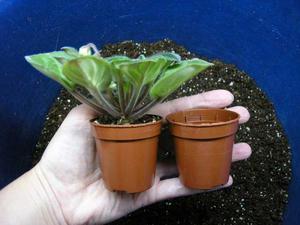 Buy only special fertilizers in flower shops. Violets need frequent feeding, but balance is important. Do not flood the plant with nitrogen and potassium, both, despite their undoubted advantages, in excess negatively affect the development of flowers. Excess nitrogen leads to the fact that the plant starts up all its strength not on the formation of flowers, but on the development of leaves and new appendages, and an excess of potassium negatively affects the growth of the plant and can cause yellowing of the foliage.
Buy only special fertilizers in flower shops. Violets need frequent feeding, but balance is important. Do not flood the plant with nitrogen and potassium, both, despite their undoubted advantages, in excess negatively affect the development of flowers. Excess nitrogen leads to the fact that the plant starts up all its strength not on the formation of flowers, but on the development of leaves and new appendages, and an excess of potassium negatively affects the growth of the plant and can cause yellowing of the foliage.
Watering
Quite often, improper watering leads not only to the absence of flowers on the violet, but also to its death. With a lack of moisture, the violet will dry out, but with an excess of it, the roots begin to rot. Therefore, it is important to observe the measure, and the amount of watering should be the same for any time of the year.Water must be allowed to stand at room temperature for at least a day. The violet is watered in four ways:
- Water is poured into a pan under the pot, and when the flower absorbs the amount of liquid it needs, the excess is poured out. Otherwise, due to waterlogging, the earth will begin to swamp and the violet will not bloom.
- A pot with a flower is placed in a wide vessel or basin filled with settled water. When the soil of the violet is saturated with moisture, the pot is taken out and removed to its permanent place.
- Traditional watering from above. But make sure that no water gets on the outlet and leaves of the plant, because they are very sensitive to moisture and its excess, which can make the flower hurt.
- There is also a fourth, modern, method of watering violets - wick. This is the most painstaking, energy-consuming method, but it is especially convenient for those growers with a large collection of flowers. For this method, even at the stage of plant transplantation, a thin cord is laid between the drainage layer and the soil at the bottom of the pot. One end of this string is placed in a ring between the soil and drainage, and the other is pulled through a hole in the bottom of the pot. Next, the violet itself is planted. When the violet is transplanted, a small container with a lid is filled with water, a pot with a plant is placed on top of the lid, and the lace is dipped into the liquid. The plant now takes care of itself on its own. It is only important to ensure that moisture does not dry out in the lower container and periodically refill it.
When and how to transplant indoor violets and how to plant violets:https://flowers.desigusxpro.com/en/komnatnye-cvety/fialka/kogda-i-kak-peresazhivat-fialki-komnatnye-i-kak-rassadit-fialku.html
Temperature and humidity
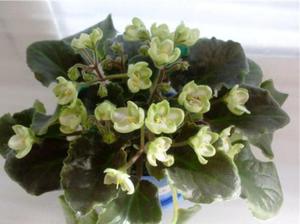 Both factors are extremely important for long and abundant flowering of violets and the requirements for them are significant. Make sure that in the place where the flowers are installed temperature not less than 16 degrees... It is especially important to monitor the temperature in March, when the plant begins to prepare for a period of long flowering and develops rapidly. If the plant is in a very cool place or there are sharp jumps in temperature, then the violet will most likely give very poor flowering and little growth.
Both factors are extremely important for long and abundant flowering of violets and the requirements for them are significant. Make sure that in the place where the flowers are installed temperature not less than 16 degrees... It is especially important to monitor the temperature in March, when the plant begins to prepare for a period of long flowering and develops rapidly. If the plant is in a very cool place or there are sharp jumps in temperature, then the violet will most likely give very poor flowering and little growth.
In nature, violets grow near lakes and water bodies, where the humidity is very high. To ensure conditions close to natural in the apartment, place a container filled with water next to the flowers. If the apartment temperature above 24 degrees, you can spray the flowers with warm water from a home spray bottle. Spraying a flower in cool conditions means that ugly white spots form on the leaves, spoiling the appearance, and the plant will not bloom.
The soil
Special requirements are imposed on the soil for violets, because ordinary garden soil is not suitable for it - too heavy, dense soil does not allow the delicate, fastidious root system of violets to develop, as a result of which it stops blooming. This plant is capricious and strict picky about the composition of the soil, it should be sour, and therefore its base should consist of peat. Pick up a light, loose, airy soil. But peat peroxides rather quickly, so it must be enriched with baking powder, for example, vermiculite, which will help to retain moisture in the soil and nourish the roots of the plant with the oxygen it needs.
The soil should not be oversaturated, the amount of additives should not exceed 50% of the total mass of the soil, otherwise the violet will begin to develop foliage, and the flowering, accordingly, will turn out to be insignificant. Therefore, it is best to purchase a special soil that is ideal for flowers, contributes to their development and the violet will bloom.
Pot
 The biggest mistake is planting a violet in a large, bulky pot. Since the violet itself is a small flower, its root system is not extensive, and in a spacious pot, failing to fill all the free space, it will not bloom and develop, and the leaves of the plant will turn yellow and wither.
The biggest mistake is planting a violet in a large, bulky pot. Since the violet itself is a small flower, its root system is not extensive, and in a spacious pot, failing to fill all the free space, it will not bloom and develop, and the leaves of the plant will turn yellow and wither.
The best option for violets is small, compact, small pots in diameter three times smaller than the outlet itself. For a medium-sized adult flower, a 200 ml pot is suitable, but if the plant is large, you can pick up a larger pot. So that a small pot filled with light soil and a small flower does not constantly fall and turn over, it can be placed on a special weighted stand.
It is also important to choose the right pot material. In order for moisture not to linger in the soil and not to rot the delicate root system, there should be a sufficient number of holes at the bottom of the pot, so flower growers prefer plastic pots. Clay vessels slowly remove moisture, and this can cause rotting and waterlogging of the soil.
Diseases and pests
Of all the reasons why a violet may not bloom, this one is easiest to determine even for a novice florist. Take a closer look at the soil, leaves and flower, maybe they are noticeable signs of infection or parasites.
The most popular diseases of violets and how to deal with them that you can do at home.
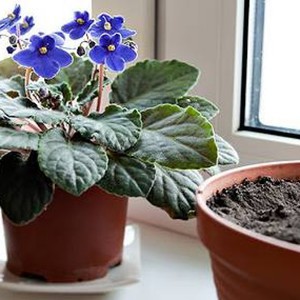 Fusarium. With improper care of the plant (excess moisture, watering with cold water, heavy soil, etc.), a fungus starts in its roots, leading to decay of the roots. The violet stops blooming, the leaves turn gray, fall off, the roots are separated from the soil. For prevention, fertilize the flower with a fundozol solution.
Fusarium. With improper care of the plant (excess moisture, watering with cold water, heavy soil, etc.), a fungus starts in its roots, leading to decay of the roots. The violet stops blooming, the leaves turn gray, fall off, the roots are separated from the soil. For prevention, fertilize the flower with a fundozol solution.- Powdery mildew. From lack of lighting, low temperature or in a dusty room, the leaves, stems of violets begin to become covered with a white, like a cobweb, bloom. For prevention, wipe the leaves with a slightly damp cloth, ventilate the rooms. For treatment, use fundozol or benlate.
- Gray rot. From the temperature difference or the abundance of watering on the leaves, flowers, petioles, a gray-brown fluffy bloom appears, under which the plant tissues rot. Remove the infected parts of the violet, treat it with fungicides. If the plant is dead, discard it with the soil.
For the destruction of harmful insects, scientists offer many different means, but the most highly effective and popular drug is the insecticide Inta vir. The drug has a fairly wide spectrum of action:https://flowers.desigusxpro.com/en/uhod-za-rasteniyami/udobreniya/intavir-ot-vrediteley-instrukciya-po-primeneniyu-preparata.html
Parasites and pests of violets:
- Worms. Violet leaves are covered with small red spots - these are the places where parasites bite, some of which can hide in the folds of leaves. If you take out the violet from the pot, then in the soil you can see the female insects, they are easy to spot by their white color, their bodies seem to be covered with white moss. Treat the plant with actellik or phytoverm, transplant it into fresh soil, thoroughly cleaning the roots and spraying them with actara.
- Aphids most often appear in the apartment along with freshly cut flowers. Insects feed on plant sap, infect buds, flowers. To combat them, use a mospilan or actellik.
- Ticks. Violets are loved by several types of mites at once, and it is easy to identify them. After the red spider mite, red dots surrounded by cobwebs remain on the leaves of the violet, after which these leaves fold and dry out. If round yellow spots appear on young leaves in the center of the flower, then this is the work of a cyclamen tick. Acarin or actellic will help fight these pests.
